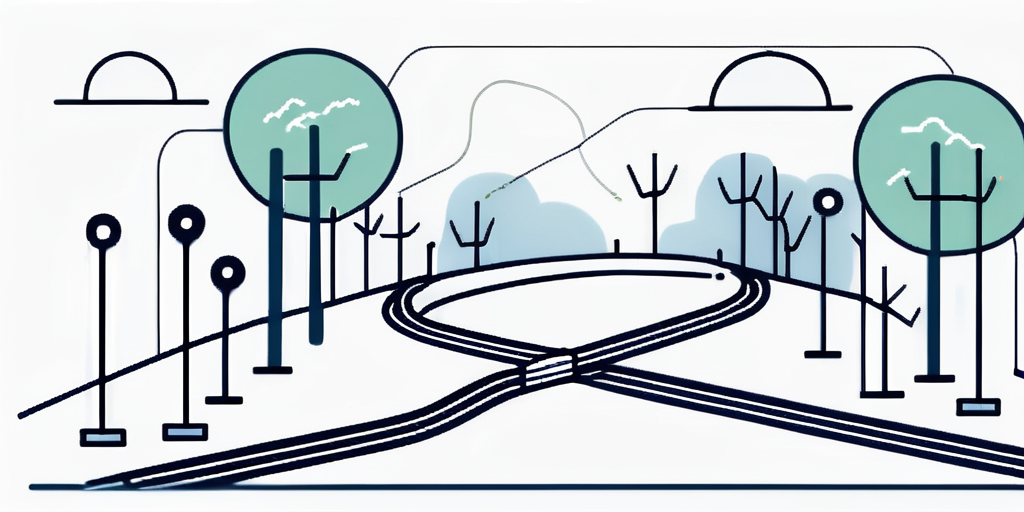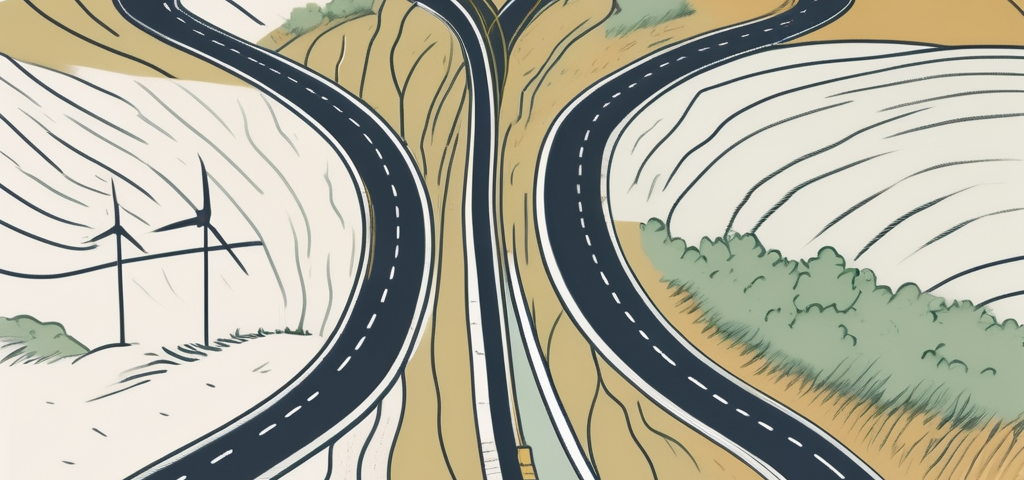RAD vs. Traditional Development: Choose the Right Path for Your Business

Audio : Listen to This Blog.
Discover the key differences between RAD and traditional development to help you make the right choice for your business.
In today’s digital era, businesses are constantly striving to stay ahead of the competition by developing cutting-edge software applications. When it comes to software development, two popular approaches have emerged: Rapid Application Development (RAD) and Traditional Development.
Each method offers its own set of advantages and disadvantages, making it crucial for businesses to carefully consider which path is the right fit for their unique needs and goals.
In this article, we will explore the key differences between RAD and Traditional Development methods, examine important factors to consider when making a decision, analyze the pros and cons of RAD, discuss the role of Agile Methodology in both approaches, evaluate cost, scalability, and flexibility, provide best practices for integrating RAD or Traditional Development into a business strategy, and finally, delve into future trends in the world of software development.
Understanding RAD (Rapid Application Development) and Traditional Development Methods
Before diving into the aspects that differentiate rapid application development and traditional development, it’s important to gain a clear understanding of each approach.
Rapid application development is a software development methodology that emphasizes iterative development, prototyping, and user feedback. It aims to expedite the development process by allowing quick adaptations and iterations based on user input. This methodology is particularly beneficial for projects where requirements are likely to change or evolve over time. RAD teams often work in collaboration with end-users to ensure that the final product meets their needs effectively and efficiently.
On the other hand, Traditional Development follows a linear and sequential process, where each phase is completed before moving on to the next. It typically involves extensive planning, documentation, and testing. This method is well-suited for projects with clearly defined and stable requirements from the outset. Traditional Development often requires a significant amount of up-front planning to ensure that all aspects of the project are considered before implementation begins.
Key Differences Between RAD and Traditional Development Approaches
While both Rapid Application Development (RAD) and Traditional Development share the common goal of delivering high-quality software applications, they differ significantly in their approach and execution.
Rapid Application Development (RAD) focuses on user involvement throughout the development process, promoting active collaboration and feedback. This approach ensures that the end product meets the actual needs and expectations of the users, leading to higher satisfaction and adoption rates. By involving users early and often, RAD can uncover potential issues or enhancements that might have been overlooked in a more traditional approach.
Traditional Development, on the other hand, relies heavily on initial requirements gathering and planning, with limited user involvement until the final stages. This sequential method can sometimes lead to misunderstandings or misinterpretations of user needs, resulting in rework and delays.
However, the structured nature of Traditional Development provides a clear roadmap and timeline for the project, making it easier to manage and predict outcomes.
The iterative nature of Rapid Application Development (RAD) allows for faster delivery and changes based on user needs, while Traditional Development tends to be more structured and predictable. This flexibility in RAD can be particularly beneficial for projects where requirements are likely to evolve or are not fully known at the outset. By adapting to changes quickly, RAD can help organizations stay competitive in fast-paced markets and respond effectively to shifting priorities.
Factors to Consider When Deciding Between RAD and Traditional Development
When deciding between Rapid Application Development (RAD) and Traditional Development, it’s essential to consider various factors that can significantly impact the success of a project. These methodologies represent distinct approaches to software development, each with its strengths and weaknesses.

One crucial factor to consider is the team dynamics. RAD typically involves a highly collaborative approach, with frequent interactions between developers and end-users. This can foster a sense of ownership and buy-in from stakeholders, leading to a product that better meets user needs. In contrast, Traditional Development often follows a more structured and hierarchical process, which may limit direct user involvement and feedback.
- Project Complexity: RAD is well-suited for projects with rapidly changing requirements and tight deadlines, whereas Traditional Development excels in complex, long-term projects that require meticulous planning and documentation.
- Technical Expertise: RAD may require less technical expertise due to its focus on prototyping and quick iterations, while Traditional Development often relies on specialized skills and experience.
- Resource Availability: RAD requires active user involvement and availability, which can be challenging for businesses with limited resources. Traditional Development, on the other hand, can progress independently with less user involvement.
Another critical consideration is the scalability of the project. RAD development is known for its ability to deliver quick results and prototypes, making it ideal for small to medium-sized projects where speed to market is crucial. On the other hand, Traditional Development’s emphasis on thorough planning and documentation may be better suited for large-scale projects that require robust architecture and long-term support.
Pros and Cons of RAD for Business Applications

Rapid Application Development (RAD) offers several advantages that make it an attractive option for businesses seeking rapid and flexible software development.
Speed to Market
RAD’s iterative approach allows for faster development and delivery, enabling businesses to respond quickly to market demands and gain a competitive edge.
User-Centric Focus
With its emphasis on active user involvement, RAD ensures that the end product aligns closely with user requirements and expectations.
Flexibility and Adaptability
RAD allows for quick changes and adaptations based on user feedback, reducing the risk of expensive rework during later stages of development.
However, RAD also has its disadvantages:
Risk of Scope Creep
The flexibility of RAD can result in scope creep if not managed effectively, leading to increased development time and costs.
Limited Documentation
The streamlined nature of RAD can sometimes result in less extensive documentation, which can pose challenges for maintenance and knowledge transfer in the long run.
The Role of Agile Methodology in RAD and Traditional Development
Agile Methodology, with its focus on collaboration, flexibility, and continuous improvement, complements both RAD and Traditional Development approaches.
In RAD, Agile principles facilitate close collaboration with users, allowing for constant feedback and validation of requirements. Agile also helps manage change effectively, ensuring that iterations are delivered on time.
Similarly, in Traditional Development, Agile practices can enhance project management, offer better visibility into the development process, and enable teams to adapt to changing requirements without compromising on quality.
Cost Analysis: RAD vs Traditional Development
Cost considerations play a crucial role in any software development project. While it may seem that RAD, with its faster development cycles, would be more expensive, the reality is more nuanced.
RAD’s iterative approach allows for early detection and resolution of issues, reducing the overall cost of rework. However, Traditional Development’s rigorous planning can help prevent unexpected costs and minimize risks.
Ultimately, the cost analysis depends on the specific project requirements, timelines, and resource availability.
Scalability and Flexibility: Evaluating RAD and Traditional Development Solutions
Scalability and flexibility are vital considerations when choosing a software development approach.
RAD’s incremental and iterative nature makes it highly scalable and adaptable to changing business needs. It allows businesses to quickly respond to market demands and accommodate new features without disrupting the entire development process.
Traditional Development, on the other hand, can be less flexible due to its linear and sequential nature. However, meticulous planning and documentation enable structured scalability, making it easier to handle complex and long-term projects.
Best Practices for Integrating RAD or Traditional Development into Your Business Strategy
Integrating Rapid Application Development (RAD) or Traditional Development into a business strategy requires careful planning and execution. Here are some best practices to consider:
Define Clear Objectives
Clearly define the project’s objectives, requirements, and success criteria to ensure alignment between the chosen development approach and the business strategy.
Choose the Right Approach
Consider the project’s complexity, timeframe, resource availability, and scalability requirements to select the most suitable approach – RAD or Traditional Development.
Collaboration and Communication
Foster active collaboration between development teams and stakeholders to ensure constant feedback and alignment with business goals.
Proper Planning
Regardless of the chosen approach, effective planning is critical. It involves creating a roadmap, setting milestones, and establishing a realistic timeline to achieve project objectives.
Implementing Your Chosen Development Methodology: A Step-by-Step Guide
Let’s dive into the practical application of your chosen development methodology, be it Rapid Application Development (RAD) or Traditional Development (TD). Below is a step-by-step guide for each approach, highlighting the key activities involved.
Choosing Your Path:
Before diving in, ensure you’ve carefully considered your project’s specific needs and chosen the most suitable methodology.
Traditional Development (TD) Implementation
- Project Initiation:
- Identify stakeholders (clients, developers, testers) and their roles.
- Establish a realistic project timeline and budget.
- Conduct a thorough feasibility study to assess project risks and potential roadblocks.
- Requirements Gathering:
- Meticulously document all functional and non-functional requirements through workshops, user interviews, and surveys.
- Ensure clear and concise requirements documentation to avoid ambiguity during development.
- System Design
- Based on gathered requirements, design the overall system architecture, outlining system components, functionalities, and data flow.
- Create detailed technical specifications for developers.
- Development & Coding:
- Developers translate the design documents into functional code, adhering to coding standards and best practices.
- Unit testing is conducted at the code module level to ensure individual components function as intended.
- System Integration & Testing:
- Developed components are integrated to form the complete system.
- Rigorous system testing is conducted to identify and rectify bugs and ensure the system meets all requirements.
- Deployment & Maintenance:
- Once testing is complete, the system is deployed to the production environment.
- A maintenance plan is established to address bug fixes, user feedback, and potential future enhancements.
Define project scope and objectives clearly.
Rapid Application Development (RAD) Implementation
- Project Kick-off & Requirements Gathering
- Conduct a collaborative workshop with stakeholders to gather initial high-level requirements.
- Focus on core functionalities and prioritize features based on user needs.
- Understand that requirements may evolve throughout the iterative development process.
- Rapid Prototyping
- Develop a basic, functional prototype of the core functionalities quickly.
- Use low-fidelity prototypes (e.g., wireframes) initially, focusing on core user interactions.
- Gather user feedback on the prototype to refine and iterate on the design.
- Iterative Development & Testing
- Break down the project into smaller, iterative development cycles.
- Each iteration focuses on developing and testing a specific set of functionalities based on user feedback from the previous prototype.
- Conduct user testing after each iteration to ensure the application aligns with evolving user needs.
- Deployment & Maintenance
- Following the final iteration and successful testing, deploy the application to the production environment.
- Maintain an agile approach to handle ongoing bug fixes, feature enhancements, and user feedback.
- Project Goals: Clearly define your project’s objectives and desired outcomes.
- Project Complexity: Consider the level of complexity involved. Traditional Development might be ideal for intricate, long-term projects, while RAD excels with evolving requirements.
- Team Dynamics: Evaluate your team’s structure. RAD thrives on collaboration, while Traditional Development often follows a more hierarchical approach.
Remember..
These are general guidelines, and specific activities within each step may vary depending on your project’s unique needs and chosen development tools.
Communication and collaboration are crucial throughout the entire development process, regardless of the chosen methodology.
Utilize project management tools and adapt your plan as needed to ensure a successful project outcome.
By following these steps and understanding the core principles of your chosen methodology, you can effectively implement RAD or TD for your next development project.
Future Trends: How RAD and Traditional Development are Evolving in the Business World
As technology continues to advance at a rapid pace, both RAD and Traditional Development approaches are evolving to meet new challenges and demands.
Integration of Artificial Intelligence (AI) and machine learning capabilities in both approaches is becoming increasingly prevalent, enabling the development of intelligent applications that can learn and adapt over time.
In addition, the rise of low-code and no-code development platforms is blurring the lines between RAD and Traditional Development. These platforms empower citizen developers to build applications without extensive coding knowledge, expediting development while maintaining flexibility.
Time to Chart Your Course: Choosing the Right Development Path for Your Business
Uncertain which software development approach best suits your project? This guide will help you navigate the options!
Choosing the right development method – Rapid Application Development (RAD) or Traditional Development – is crucial for success. Here at MSys, we understand this critical decision.
Making the Right Choice
Beyond understanding the methodologies, we’ll guide you through the selection process. Here are some key considerations:
MSys: Your Partner in Development Success
Regardless of your chosen method, MSys is here to help. Our team of experts possesses the skills and experience to guide you through every stage of development.
Contact MSys today for a free consultation! We’ll work closely with you to understand your project’s unique needs and recommend the most effective development path for achieving your business goals.
